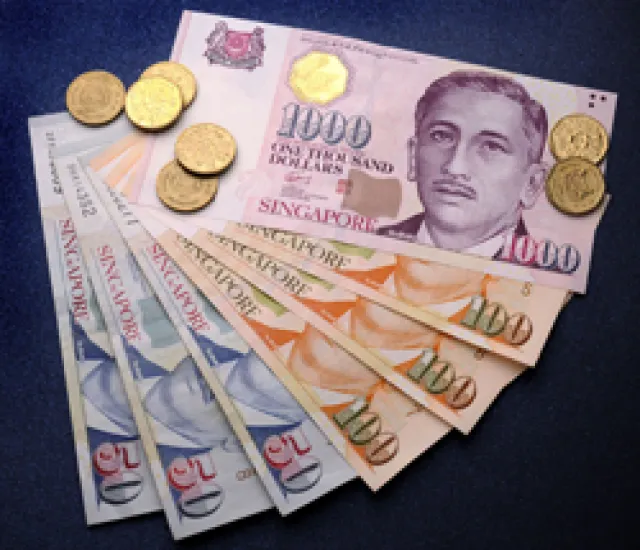Consumer prices for oil and food are rising sharply throughout emerging markets, especially in developing Asia. Central banks have responded with a series of measures to control inflation, including increased tolerance for higher exchange rates. According to currency strategists, this policy shift has created a buying opportunity for several Asian currencies. “The stars have aligned for emerging markets because you have this inflation threat, so a strong currency in theory helps to reduce import prices and helps the inflation battle,” says Clyde Wardle, an emerging-markets currency strategist at HSBC Holdings in New York. “At the same time, the dollar has remained extremely weak, leading to very strong gains in Asian currencies.”
Although the U.S. dollar and the euro float freely on foreign exchange markets, most Asian countries use what’s called a managed float, in which central banks intervene to preserve orderly movements of their currencies and prevent excessive volatility.
What’s causing the sudden burst of inflation in emerging markets? Some economists blame the Federal Reserve Board’s zero interest rate policy, which has sent investors scurrying to the developing world for higher returns. But there’s also a domestic element, with strong economic growth and rising internal demand for fuel and goods in Indonesia, Singapore and other Asian nations. In Singapore, for example, inflation rose to 5.2 percent in the first quarter from 3.4 percent in the third quarter of 2010.
The Monetary Authority of Singapore controls monetary policy by adjusting the exchange rate rather than interest rates. On April 14 the central bank said it had shifted its exchange rate policy band — based on a basket of currencies it does not disclose — upward for the third time in 18 months. It didn’t announce an exact number, but analysts at Standard Chartered peg the increase at about 2 percent. The Singaporean dollar, which was trading at $1.29 to the greenback at the start of the year, had risen to $1.24 by mid-May, a 4 percent gain.
In a similar move, on May 6, Bank Negara Malaysia raised its overnight policy rate, a target for day-to-day operations, by 25 basis points, to 3 percent. HSBC recommends going short the U.S. dollar and long the Singaporean dollar and the Malaysian ringgit.
Indonesia, where consumer prices jumped 6.16 percent on an annual basis in April, is another example of a central bank using an appreciating currency to fight inflation. Thomas Harr, a Singapore-based currency strategist at Standard Chartered, notes that Indonesian monetary authorities have allowed the currency to climb rather than raising interest rates after February’s 25-basis-point hike, the first in two years. “They made a very clear FX policy change in February when they said they will allow Indonesian rupiah appreciation to deal with their rising inflation,” Harr says. The rupiah has increased some 5 percent this year, reaching about 8,600 to the U.S. dollar.
Standard Chartered strategists recommend selling the Indian rupee and buying the Indonesian rupiah, and selling the Philippine peso to buy the Malaysian ringgit. In addition to the inflation issue, Harr says, Malaysia and Indonesia are relatively strong because they are the region’s only two major oil producers, while India and the Philippines are big importers of oil.
Thio Chin Loo, French bank BNP Paribas’s senior currency and interest rate strategist in Singapore, says that although there are some cross-currency plays in Asia, transaction costs can limit the opportunities. “We’ve called for underperformance in the rupee, but if you short the rupee and buy the Singapore dollar, there are heavy carrying costs because the Singapore dollar interest rates are lower than U.S. dollar rates and you would be paid less,” Thio says. “But if you short the rupee and buy the greenback, it’s a little less costly.”
Strategists at BNP Paribas say they see a steepening opportunity in the South Korean won because the Bank of Korea is likely to maintain a policy of modest monetary tightening. The won was up 3 percent for the month of April, making it the best-performing currency in Asia.
Another Asian country with big inflation concerns is China, where consumer prices rose 5.3 percent on an annual basis in April, well above the government’s 4 percent target. Chinese authorities have let the renminbi appreciate almost 2 percent against the dollar this year, to 6.49 in mid-May, its highest level ever. As a result of this inflation pressure, HSBC recommends shorting the greenback and going long the offshore renminbi traded in Hong Kong, known as the CNH.






